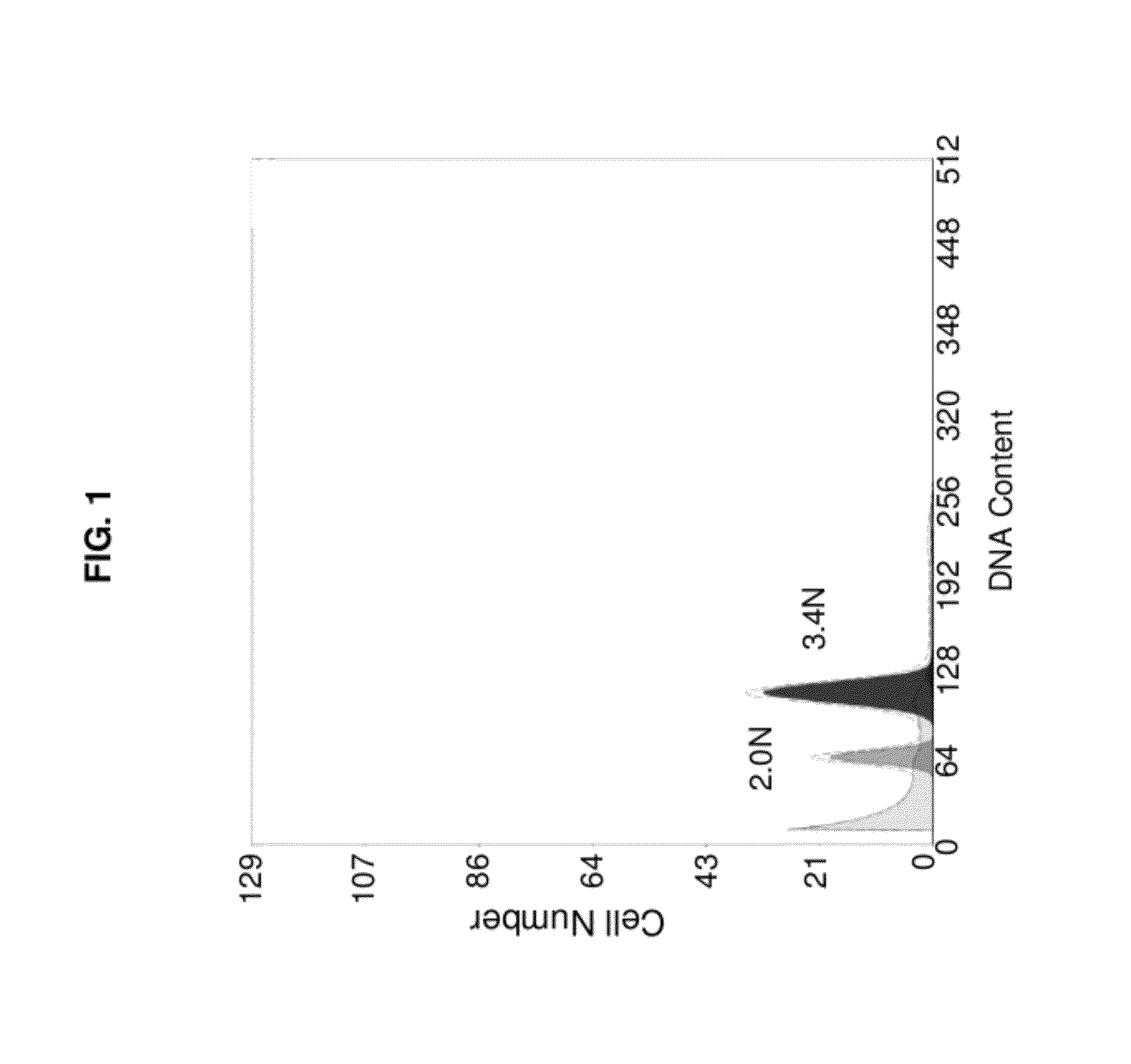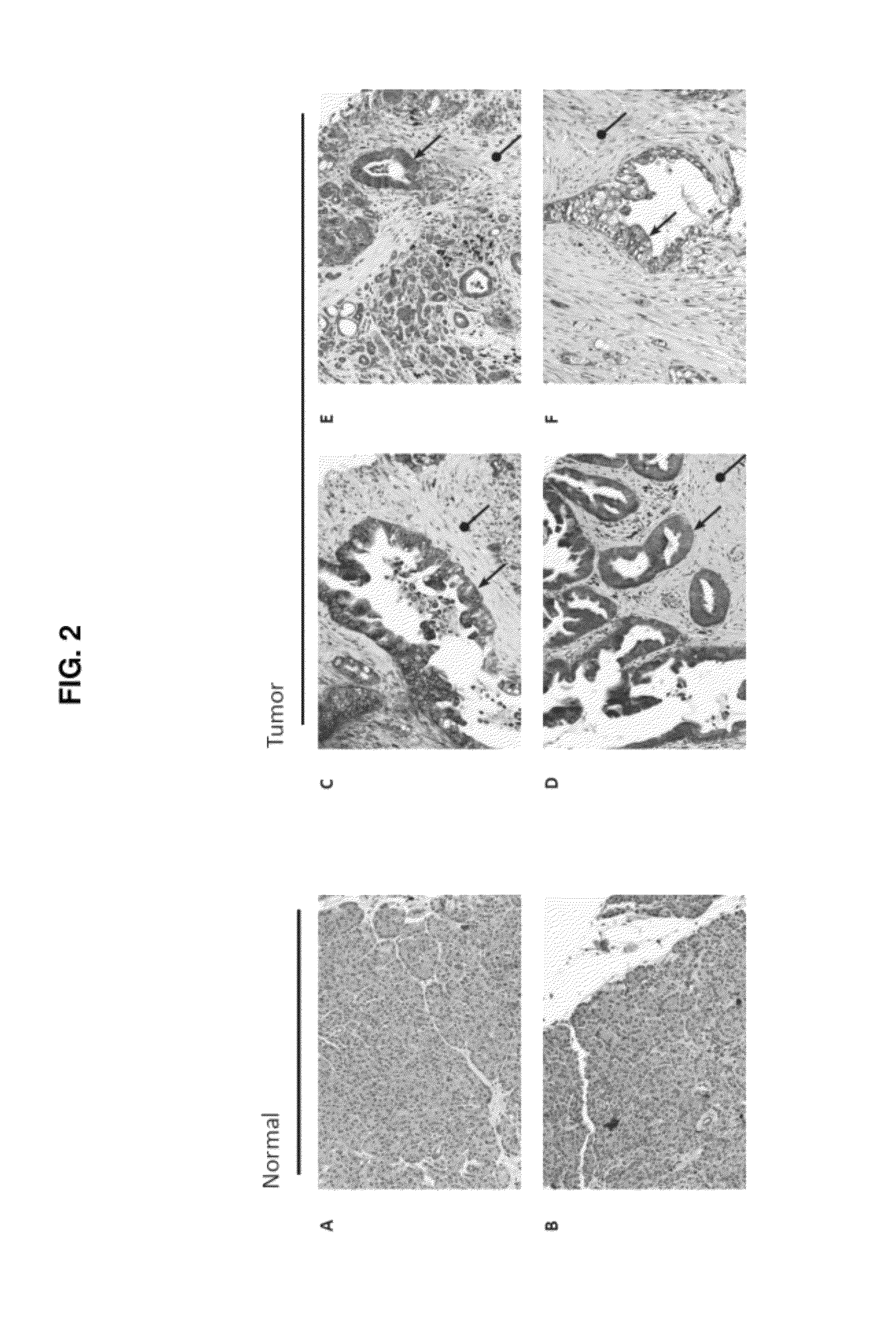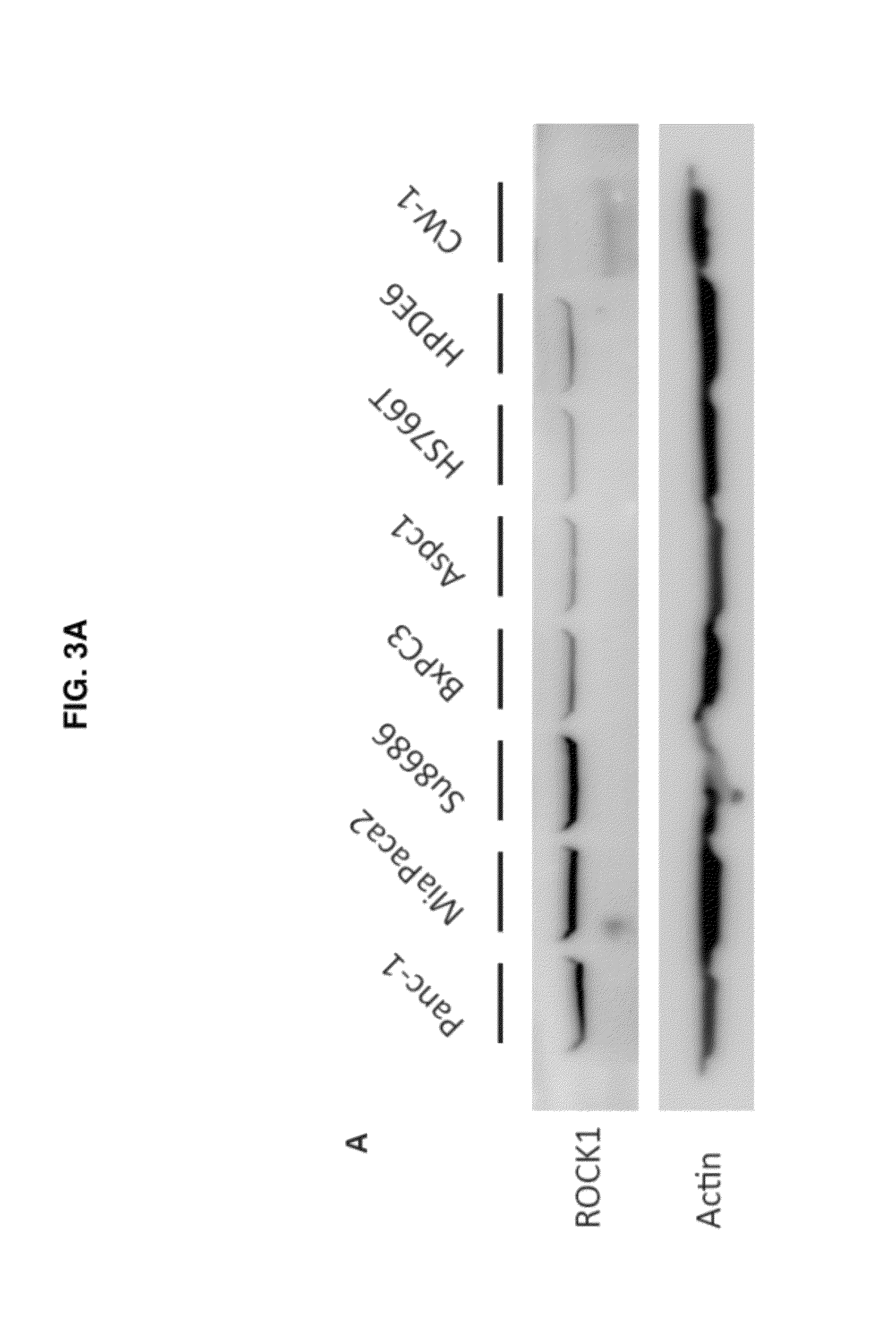Therapeutic target for pancreatic cancer cells
a technology for pancreatic cancer and therapeutic targets, which is applied in the field of therapeutic targets for pancreatic cancer, can solve the problems of not many reports of effective treatment of advanced pancreatic cancer, and no modality for early detection of pancreatic cancer, and achieve the effects of reducing the contribution of the stromal body to pancreatic tumor growth, reducing the risk of stromal stromal involvement, and preventing stromal stromal involvemen
- Summary
- Abstract
- Description
- Claims
- Application Information
AI Technical Summary
Benefits of technology
Problems solved by technology
Method used
Image
Examples
example 1
ROCK1 is Overexpressed in Human Pancreatic Tumor Cells and Amplified in a Small Subset of PDAC Patient Samples
[0084]ROCK1 is amplified in a subset of pancreatic tumor samples: A low frequency amplification of the ROCK1 gene locus at chromosome 18q11.1 was identified in pancreatic ductal adenocarcinoma (PDA) patient tissue samples by aCGH analysis. The ROCK1 gene locus is focally amplified in pancreatic ductal adenocarcinoma. A focal amplification was identified in the aneuploid population of multiple cell-sorted tumor samples at chromosome 18q11, which is confirmed to be ROCK1 gene locus. ROCK1 amplification (as measured by aCGH) was observed at a 12% frequency in human pancreatic tumors. The low frequency amplification was detected in 4 out of the 34 cases analyzed (FIG. 1).
[0085]Increased ROCK1 expression is observed in pancreatic cancer patient tumor samples: As shown in FIG. 2, an increase in ROCK1 expression was observed using immunohistochemistry (IHC) analysis in tumor tissue...
example 2
Effect of ROCK1 Inhibitors in Pancreatic Cancer Cell Line Cells
[0089]Efficacy of ROCK inhibition evaluated by drug dose-response curves: The small molecule ROCK1 inhibitors, fasudil and Y27632, were analyzed for their effects in pancreatic cancer cell lines. Drug dose-response curves were created to assess the efficacy of ROCK inhibition at 72 hours of drug exposure. FIG. 5A presents the drug dose-response curves for fasudil exposure in MiaPaca, Su8686, Panc-1 and CW1 cell line cells. FIG. 5B presents the drug dose-response curves for Y-27632 exposure in the same above mentioned cell lines. Gemcitabine, a nucleoside analog, replaces one of the building blocks, cytidine, during DNA replication and thus arrests tumor growth, which leads to cell death. Gemcitabine is shown for reference as illustrated in FIG. 5C. IC50 values for each inhibitor to each cell lines are shown in TABLE 2, which demonstrated moderate (IC50s range from 6-71 μM) inhibition of PDA cell proliferation by fasudil ...
example 3
PDAC Treatment Using Fasudil to Target ROCK1 for the Inhibition of the Stromal Contribution to Tumor Growth
[0097]Fasudil inhibits stellate cell proliferation and function: The effects of fasudil on the proliferation and expansion of the stromal compartment in a co-culture of human pancreatic cancer-derived fibroblasts and SU8686 cells were compared. Cells were seeded and then treated with fasudil for 72 hours at the concentrations ranging from 0, 3 μm, 6 μm, 12 μm, 25 μm, 50 μm to 100 μm. Subsequently, cells were fixed and stained for the epithelial cell marker, cytokeratin, in green, and αSMA, in red. A significant reduction in cell proliferation was seen for both cancer cells and stellate cells at 100 μM, relative to the untreated sample as shown by DNA, cytokeratin and αSMA staining (FIG. 12). It is noted, particularly, that aSMA expressing cells (stellate cells), were selectively inhibited at 50 μM, 25 μM, and 12 μM.
[0098]Effects of fasudil treatment on the stromal compartment i...
PUM
| Property | Measurement | Unit |
|---|---|---|
| time | aaaaa | aaaaa |
| molecular mass | aaaaa | aaaaa |
| molecular weight | aaaaa | aaaaa |
Abstract
Description
Claims
Application Information
 Login to View More
Login to View More - R&D
- Intellectual Property
- Life Sciences
- Materials
- Tech Scout
- Unparalleled Data Quality
- Higher Quality Content
- 60% Fewer Hallucinations
Browse by: Latest US Patents, China's latest patents, Technical Efficacy Thesaurus, Application Domain, Technology Topic, Popular Technical Reports.
© 2025 PatSnap. All rights reserved.Legal|Privacy policy|Modern Slavery Act Transparency Statement|Sitemap|About US| Contact US: help@patsnap.com



